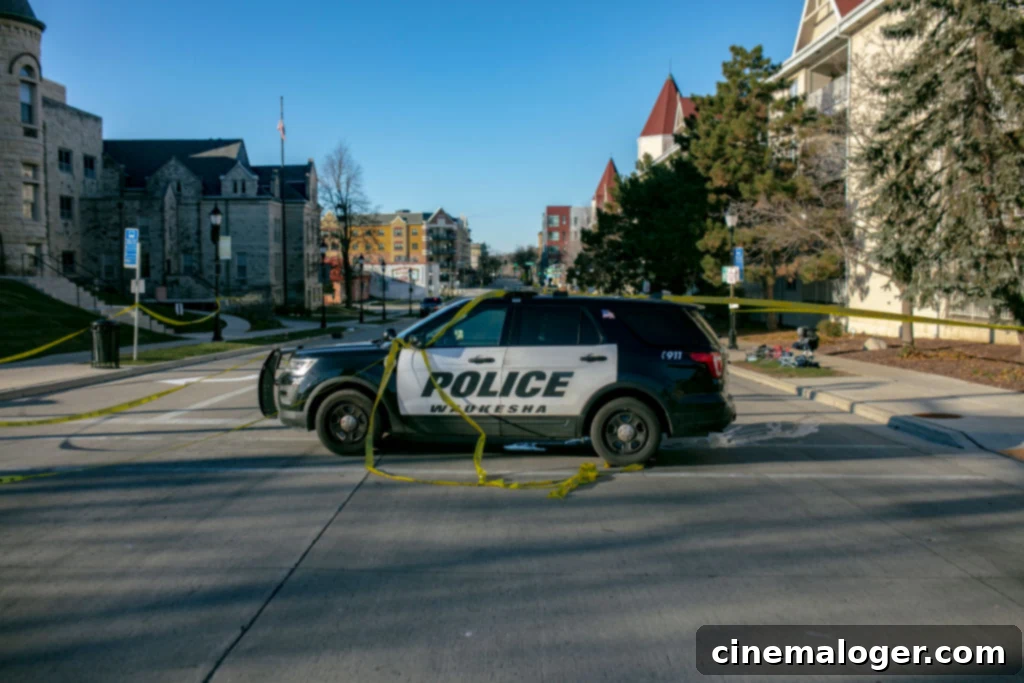The Escalating Crisis: An In-Depth Look at US School Shootings and Gun Violence in 2024
The United States continues to grapple with a deeply concerning and escalating issue: gun violence. This pervasive problem manifests in various forms, but none are perhaps as heartbreaking and alarming as the increasing frequency of school shootings. According to CNN, the nation has witnessed a year-over-year rise in these tragic incidents since 2021, a trend that casts a long shadow over the safety and well-being of America’s youth and educational institutions.
The debate surrounding gun violence has been a contentious and often polarizing topic in the United States for decades. However, the relentless uptick in annual school shootings has intensified calls for meaningful policy changes and comprehensive reforms. Across the country, a shared sentiment unites most Americans: the urgent desire for guaranteed safety and security for their children within school environments. The year 2024, in particular, has marked a grim milestone, recording more school shootings than in several preceding years, fueling widespread anxiety and a renewed push for action.
The gravity of the situation was underscored on December 14, 2024, when President Joe Biden issued a poignant statement commemorating the 12th anniversary of the horrific Sandy Hook Elementary School tragedy in Newtown, Connecticut. This devastating event, which claimed the lives of 20 first-graders and six educators, remains a painful reminder of the profound impact of gun violence on communities. In his address, President Biden emphasized the enduring strength and advocacy of those directly impacted by the Sandy Hook tragedy, highlighting their relentless efforts to champion change and prevent similar future catastrophes.
President Biden acknowledged the progress made during his administration, stating, “With the strength of this emboldened movement by our side, we have made historic progress to reduce gun violence over the past four years.” He pointed to significant legislative and executive actions taken under his leadership. “I signed into law the most significant piece of gun safety legislation in nearly 30 years. I announced dozens of executive actions to keep guns out of dangerous hands and get especially dangerous weapons off our streets. … After four years under my administration, homicides are down, crime is falling, and we are seeing fewer mass shootings. This progress is no accident,” Biden explained, highlighting a concerted effort to tackle the issue from multiple angles.
The legislation President Biden referred to is likely the Bipartisan Safer Communities Act, passed in June 2022. This landmark bill represented the most significant federal gun safety legislation enacted in nearly three decades. It included provisions such as enhanced background checks for gun buyers under 21, funding for state “red flag” laws, investments in mental health services, and closing the “boyfriend loophole” to prevent dating partners convicted of domestic violence from buying firearms. These measures were lauded by proponents as crucial steps towards reducing gun violence, demonstrating that bipartisan action on this sensitive issue is possible.

Despite these acknowledged advancements, President Biden candidly recognized that the battle against gun violence is far from over. He stressed that “more must be done” and underscored the critical role of Congress in addressing the crisis. He stated unequivocally that Congress “has an obligation to ‘do something’ in order to protect our children and communities from this scourge of gun violence.” This statement reflects the persistent demand from advocates and the public for legislative bodies to take further, more impactful steps beyond what has already been achieved.
Biden further highlighted the United States’ grim distinction as the “only nation experiencing this epidemic” of gun violence at such a scale among developed countries. This unique statistical anomaly often fuels international comparisons and intensifies domestic calls for stricter gun control measures. He urged Congress to enact a series of specific, comprehensive policies designed to curb the violence. These proposals include the implementation of “universal background checks,” which would close loopholes that allow private gun sales without scrutiny; “red flag laws,” enabling temporary removal of firearms from individuals deemed a danger to themselves or others; “safe storage requirements,” promoting responsible firearm ownership to prevent accidental shootings and theft; and critically, a “ban on assault weapons like the one used at Sandy Hook,” referencing the high-capacity, rapid-fire rifles often used in mass casualty events.
Each of these proposed measures carries significant implications and faces varying degrees of political support and opposition. Universal background checks are widely supported by the public and aim to ensure that all gun purchasers, regardless of whether they buy from a licensed dealer or a private seller, undergo a criminal and mental health screening. Red flag laws, also known as Extreme Risk Protection Orders, are designed as preventative tools, allowing family members or law enforcement to petition a court to temporarily remove guns from individuals posing an imminent threat. Safe storage laws seek to reduce unintentional shootings, especially among children, and prevent firearms from being stolen and used in crimes. The ban on assault weapons is perhaps the most contentious, with proponents arguing these weapons are designed for military combat and have no place in civilian hands, while opponents argue against infringement on Second Amendment rights.
As the year 2024 draws to a close, the nation remains focused on understanding the full scope of gun violence. This includes not only the heartbreaking incidents in schools but also the broader category of mass shootings that have afflicted communities across the U.S. Learning the exact numbers provides a stark quantification of the challenges ahead and underscores the urgency of ongoing debates and reform efforts. The statistics, as presented by various organizations, paint a vivid picture of the sheer volume of these incidents.
How Many Mass Shootings Have There Been in the U.S. in 2024?
The prevalence of mass shootings in the United States remains a distressing indicator of the nation’s gun violence crisis. According to the Gun Violence Archive (GVA), there have been more than 380 mass shootings in the U.S. in 2024. The GVA defines a mass shooting as an incident in which four or more people are shot or killed, not including the shooter. This definition encompasses a wide range of scenarios, from targeted attacks to indiscriminate violence, underscoring the pervasive nature of firearm-related fatalities and injuries in public and private spaces alike. Each incident leaves behind a trail of grief, trauma, and a stark reminder of the devastating potential of readily available firearms.
The sheer volume of over 380 mass shootings in a single year translates to more than one such incident per day, on average. This frequency highlights a disturbing reality for many American communities, where the threat of mass violence can feel ever-present. These events often lead to profound psychological impacts, not just on direct victims and their families, but also on first responders, witnesses, and the wider community, fostering a sense of fear and insecurity.
How Many School Shootings Were There in 2024?
The statistics surrounding school shootings in 2024 present a complex and somewhat varied picture, depending on the source and its methodology. According to CNN, a total of at least 83 school shootings have occurred in America during 2024. This figure is further broken down, revealing that 27 of these incidents took place on college campuses, while the remaining 56 impacted K-12 schools, encompassing elementary, middle, and high schools. This distinction highlights that no level of education is immune to the threat of gun violence.
The increase in school shootings in recent years contrasts sharply with the year 2020, which saw a noticeable decrease in such incidents. This reduction was largely attributed to the widespread COVID-19 lockdowns, which significantly reduced the physical presence of students and staff on school grounds for extended periods. As schools reopened and normal activities resumed, the unfortunate trend of rising gun violence in educational settings also resurfaced, pointing to the crucial role of physical presence in the vulnerability of these institutions.
However, it is important to note that other outlets and organizations have reported significantly higher figures for school shootings in 2024, with some stating there have been more than 300 incidents this year. This discrepancy often arises from differing definitions of what constitutes a “school shooting.” Some tallies include any instance of a firearm being discharged on school property, even if no one is injured or if the incident is not related to an active shooter scenario (e.g., accidental discharge, suicide, or gang-related violence occurring on campus). Other definitions might be more restrictive, focusing only on events where students or staff are targeted or injured during school hours.
Regardless of the precise methodology, the reported numbers, whether 83 or over 300, underscore an undeniable and deeply troubling reality: American schools are increasingly becoming sites of gun violence. This continuous threat has led to a range of responses from school districts and policymakers, including increased security measures, mental health support initiatives, and ongoing debates about the role of educators in emergency response. The profound impact on students’ and teachers’ mental health, the disruption to learning environments, and the erosion of a sense of safety are immeasurable consequences of this ongoing crisis.
The conversation surrounding gun violence in the US is multifaceted, touching upon individual rights, public safety, mental health, and the very fabric of community life. As 2024 concludes, the statistics serve not merely as numbers but as a powerful testament to the urgent need for collective action, thoughtful policy, and a renewed commitment to creating safer environments for all, especially for the children who are America’s future.
